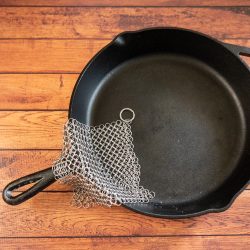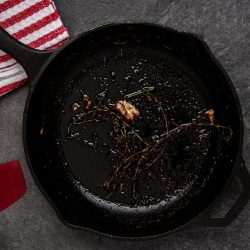A cast iron pan will last generations if you care for it correctly. Good seasoning provides a nonstick coating that lets even the most delicate foods slide around with ease, but where to begin? We did the research and came up with a comprehensive guide to seasoning your cast iron pan.
A cast iron pan should be seasoned a few times upon purchase and then again after each use. The exception is if you're cooking with an abundance of oil, in which case you should be able to simply wipe out your pan and skip the seasoning step.
Whether you've just bought your first cast iron skillet or are trying to maintain the one your grandmother gave you, we've got it covered. Keep reading to learn everything you need to know about your pan and how to season it correctly.
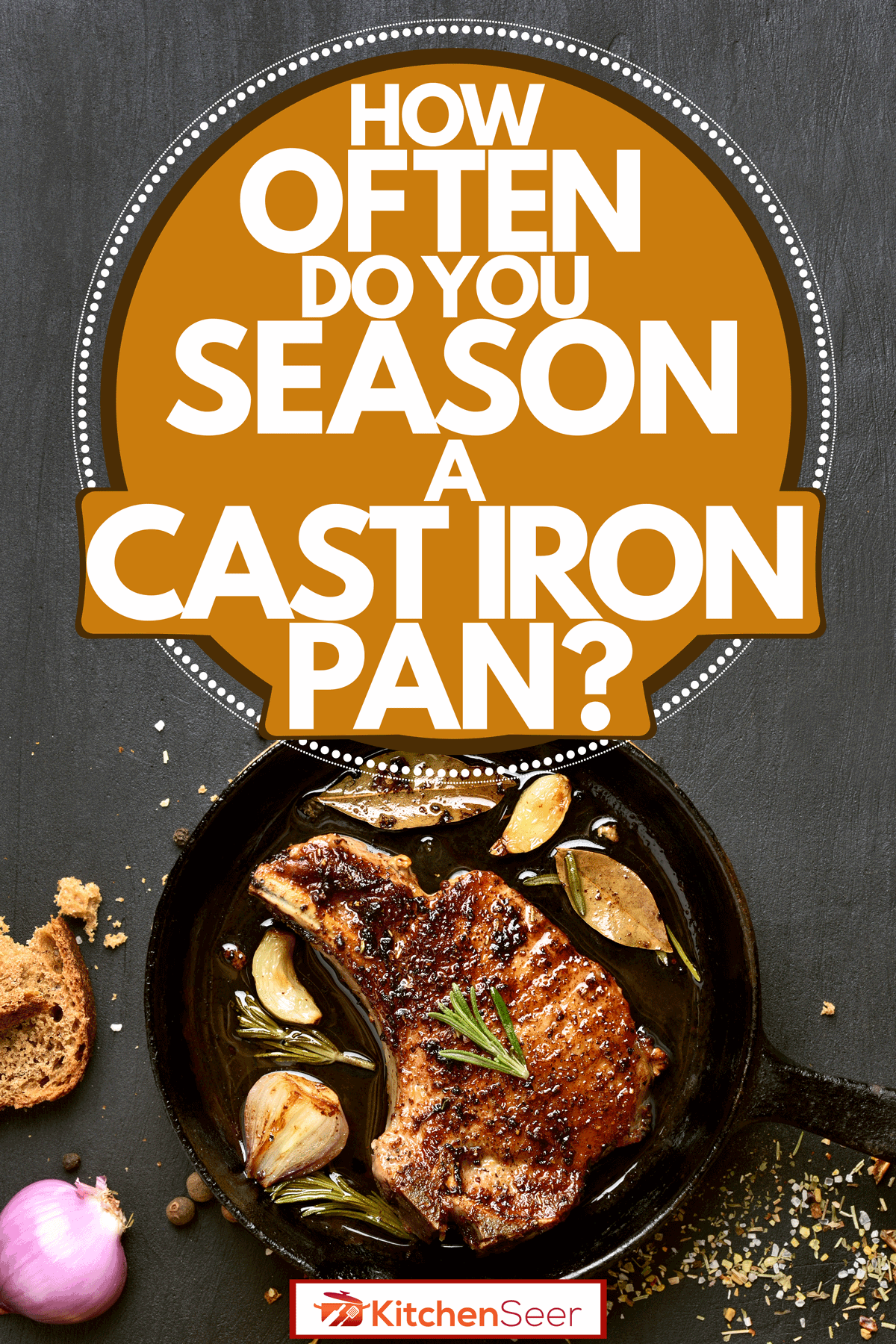
What Is A Cast Iron Pan?
Cast iron cooking is the pinnacle of old-school meets new aged. Although they're rather trendy – you're sure to find a Lodge skillet hanging on your Brooklyn hipster friend's kitchen wall, no doubt – they've also been prominent in home kitchens for over a century.

Cast iron pans are so popular because of their durability, longevity, and -with the right seasoning -nonstick ability. Regular nonstick skillets that are coated with Teflon are often flimsy with plastic handles, making them limited in what they can do (don't even think about putting one of those in the oven).
Cast iron pans are amazing conductors of heat due to their heft, and a properly seasoned pan will fry an egg with no sticking whatsoever. It really is the best of both worlds!
Check out this Lodge 10" Cast Iron Skillet on Amazon.
How To Season A Cast Iron Pan
Although most newly bought cast iron pans will claim to be pre-seasoned, this doesn't exactly mean they're ready to roll. Rather, think of it like they gave you a head start, but you need to finish the process.
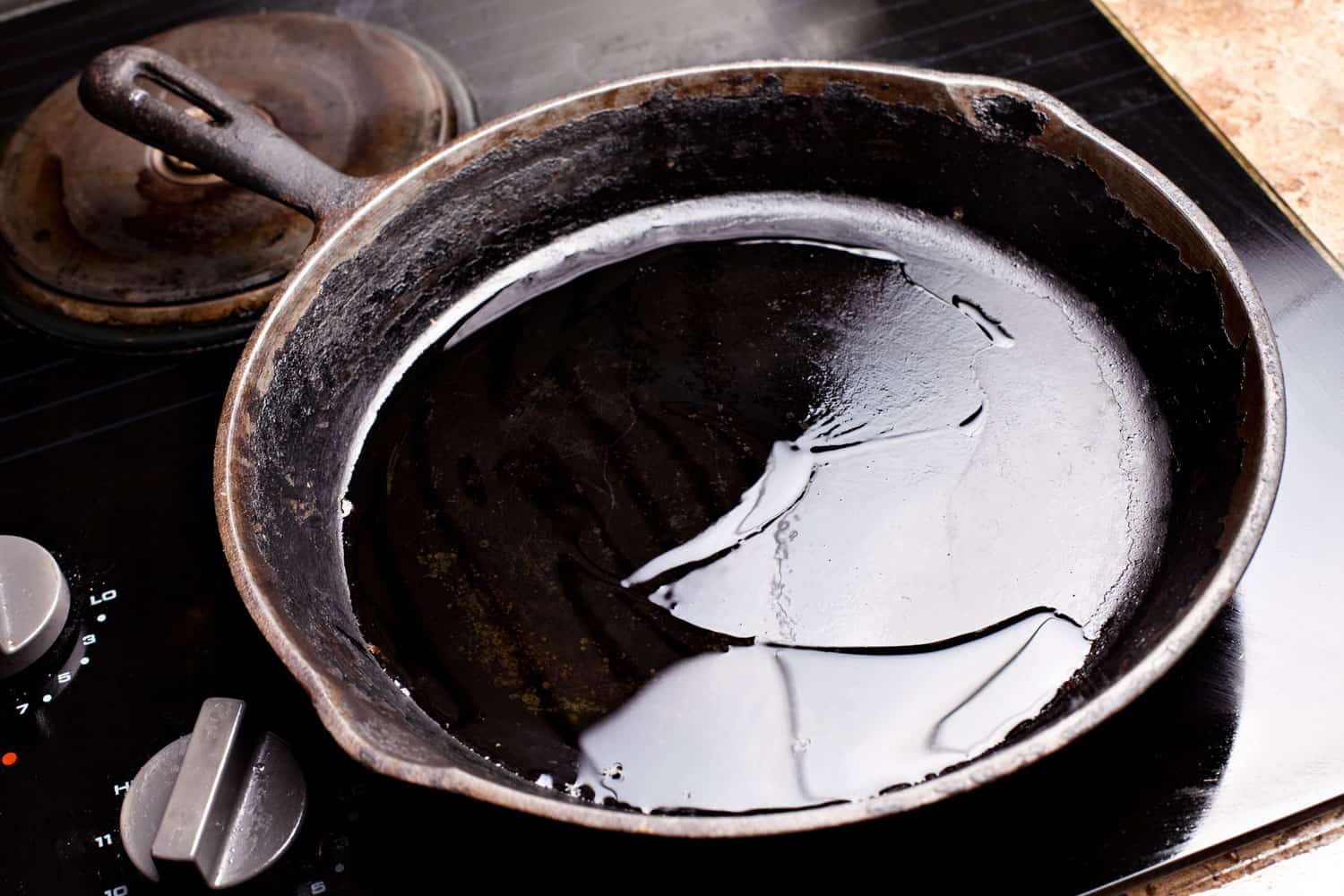
Seasoning a cast iron pan means achieving a thin, even layer of cooked-on oil that acts as a nonstick surface. This layer is delicate, so constant maintenance is required to ensure it's working properly. To get the perfect layer of seasoning, you'll need oil, heat, and time.
Check out this article: '33 Kitchen Gift Ideas For Moms Who Love To Cook.'
Initial Seasoning
When you first get your pan, start by coating the entire thing (back, handle, and all!) in a thin layer of neutral oil. When we say thin, we mean THIN! Take a rag or a paper towel and smear no more than a tablespoon-sized amount in every nook and cranny. There should be absolutely no drips or pooling.
Now it's time to stick it in your preheated oven (the temperature will depend on what oil you're using. Keep reading, we cover everything!). Place it upside down directly on the center rack, so any excess oil drips off. Pro-tip: place a sheet tray on a rack below your pan to catch those drops of oil. You don't want that stuff splashing around in your oven.
Bake your pan for an hour, turn off the heat, and let it cool inside the oven. The more times you repeat this process, the better your initial seasoning will be. We suggest doing it three or four times over the course of a day or two.
So, You're Ready To Use Your Pan
Even if you've followed all the steps above, your pan may not have the perfect coating the first couple of times you use it. For this reason, we suggest cooking foods that will release tons of fat or require a lot of oil for your first few go-arounds. Try cooking bacon or making fried chicken – anything that will get your pan nice and greasy.
How To Maintain Your Seasoning
If your pan is already filled with oil from cooking, you can simply dump out the excess oil and wipe it down with a rag. Otherwise, you'll need to go through the seasoning process, but don't worry about heating up your oven. Follow these steps each time you need to re-season your pan.
- Use a metal spatula to scrape stuck-on bits.
- If necessary, wash with dish soap and hot water (no, soap won't ruin your pan!).
- Dry immediately with a towel. Absolutely NO air drying!
- Put your pan back on the stove and heat it up over medium-low heat (high heat risks cracking).
- Once hot, swipe a few drops of oil on the surface with a rag or paper towel.
- Keep on the heat until you see wisps of smoke.
- Turn the heat off and let cool before storing.
What Can I Season My Cast Iron Skillet With?
A neutral oil with a high smoke point works best to create that perfect seasoning you're after. Keep reading to learn the best oils for the job.
Check out this article: 'Kitchen Utensils: The Ultimate List [Do You Know All 56?]'
Canola/Vegetable Oil
These are great options because of their accessibility. Vegetable and canola oils are some of the cheapest you can buy, and chances are you already have some lying around the house! The smoke point of both oils is around 450°F, making it a good contender.
Check out this 365 brand Vegetable Oil on Amazon.
Extra Virgin Olive Oil
This is another oil that most home cooks will probably have in their cabinet, but we don't recommend it as your go-to oil for a few reasons. First, it's expensive, so why not save it for when its delicious flavor can shine? Also, it has a lower smoke point than other oils, clocking in at about 375°F. This means it'll have a higher chance of burning during the seasoning process.
If olive oil is all you have, then it will absolutely do the trick in a pinch. But we suggest keeping one of our other favorite seasoning oils on hand for everyday use.
Check out this Pompeian Robust Extra Virgin Olive Oil on Amazon.
Grapeseed Oil
Grapeseed is the most popular seasoning oil used by home cooks and professional chefs alike. Its smoke point is 420°F, and it has a completely neutral taste/smell, not to mention it's slightly thinner than vegetable oil because it's less refined. We highly suggest investing in a bottle of grapeseed oil if you want to take your cast iron pan's seasoning seriously.
Check out this Pompeian 100% Grapeseed Oil on Amazon.
Lard
Lard is the old-fashioned method of seasoning cast iron, and it still works perfectly fine as long as you don't mind using animal fat. Just place a dollop in your hot pan and season accordingly. But beware: it can go rancid over time, so if you don't use your pan regularly, this may not be the option for you.
Check out this SPC Traditional LARD on Amazon.
How Can You Tell If Your Cast Iron Is Seasoned?
An expertly seasoned cast iron pan will be completely black and have a satin, subtly shiny finish. If your pan is matte, spotted in color, or rusty, then your seasoning needs to be redone. Likewise, a glossy/mirror-like finish isn't what you're looking for, despite what many people think. This means that your oil isn't baked-on the way it should be.
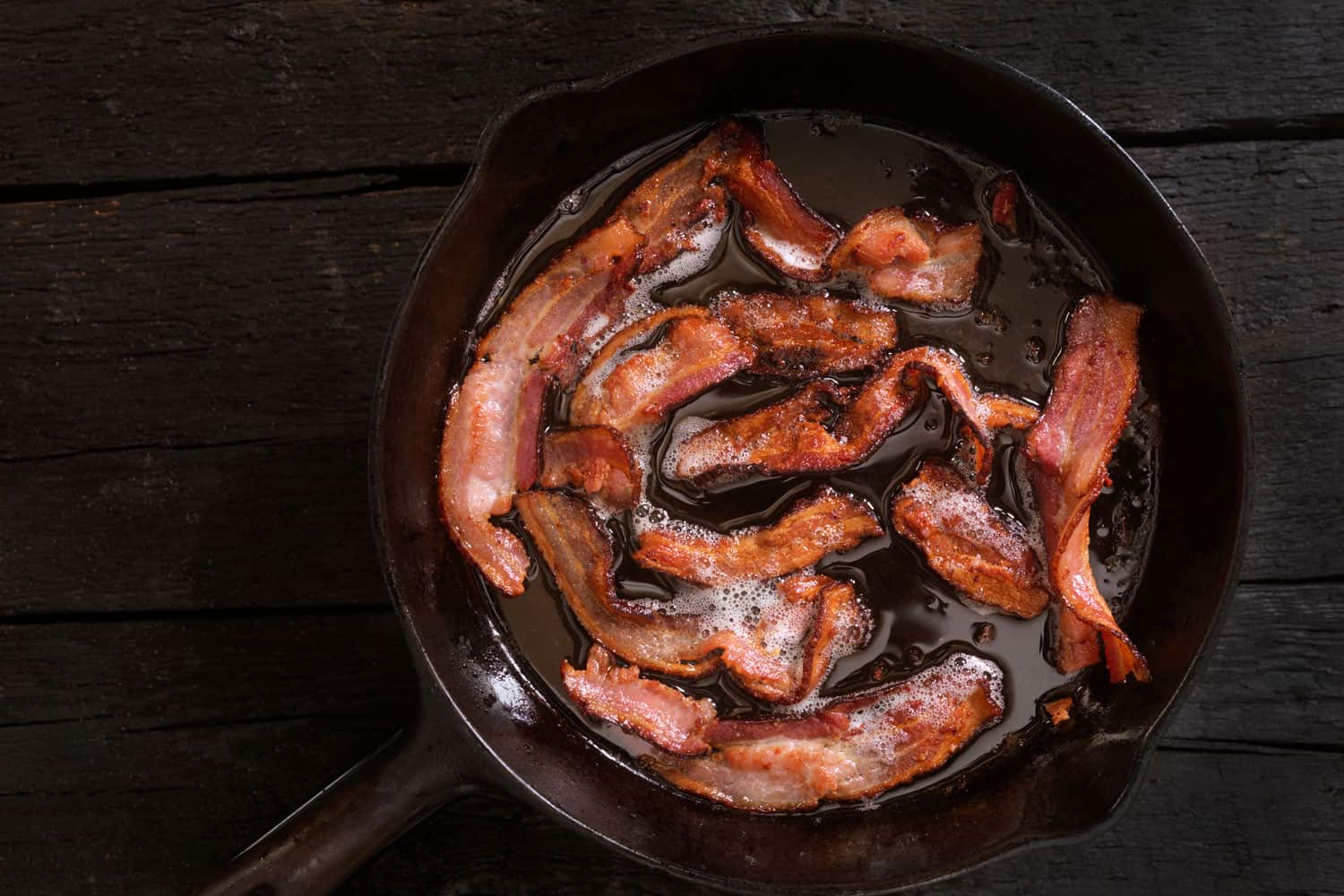
How To Redo Your Seasoning
When we say cast iron is durable, we mean it. It's nearly impossible to ruin your pan, so your seasoning is always salvageable. If you need to start fresh with brand new seasoning, simply scrub out your pan with soap, hot water, and steel wool. Keep scraping until your pan is evenly silver/gray, and start the seasoning process from the beginning.
What Happens If You Don't Season A Cast Iron Pan?
Cast iron seasoning has two main functions: to deter rusting and to impart a nonstick surface. Cast iron is porous, so without a layer of baked-on oil to keep water from absorbing into the material, rust forms extremely easily.
The other upside is a no-brainer. Why have a pan food stick when you could have a beautifully seasoned pan that sears meats, fries eggs, and even delicately cooks fish with ease? Good seasoning is the key to good food made in your cast iron skillet.
Now Get Cooking!
Maintaining the proper equipment is the first step to cooking a delicious meal. Remember: season your cast iron pan a few times upon purchase and again each time you use it. If you follow our steps, your cast iron pan will last a lifetime.






